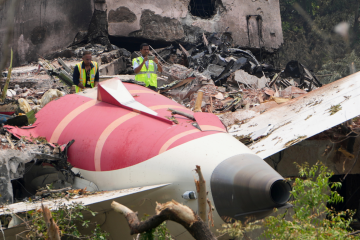Understanding Boeing 787 Dreamliner Engine Failures
Introduction
The Boeing 787 Dreamliner, renowned for its advanced technology and fuel efficiency, has recently experienced notable engine failure incidents, raising concerns about safety and reliability in aviation. With hundreds of these aircraft in service worldwide, any technical issues not only impact airline operations but also passenger confidence. Understanding the nature of these engine failures and the subsequent responses from Boeing and regulatory bodies is crucial in highlighting the importance of aircraft safety.
Details of Recent Incidents
In the past few months, there have been several reports regarding engine failures in the Boeing 787 Dreamliner. Specifically, incidents involving the Rolls-Royce Trent 1000 engines have drawn significant media attention and scrutiny. In August 2023, a Dreamliner operated by a major airline had to perform an emergency landing shortly after takeoff due to abnormalities detected in one of its engines. Although no injuries were reported, the incident reignited discussions on engine reliability.
In response to these failures, Boeing and Rolls-Royce have been conducting extensive inspections and maintenance checks on their fleet. An investigation revealed that fatigue cracks in turbine blades could contribute to engine issues, prompting regulatory agencies like the Federal Aviation Administration (FAA) to issue directives aimed at ensuring further checks on affected engines. Additionally, airlines operating the Dreamliner have implemented stricter maintenance protocols to mitigate risks associated with engine performance.
Impacts on Airlines and Passengers
The effects of engine failures extend beyond immediate safety concerns. Airlines face costs related to grounded aircraft and repairs, while passengers may experience delays and cancellations. The economic implications for airlines, especially those relying heavily on the 787 for long-haul flights, are profound, as consumers expect prompt services. Furthermore, brand reputation can be adversely affected if safety issues are perceived to be mishandled.
Conclusion: Future Implications
Looking ahead, Boeing and Rolls-Royce must work diligently to restore confidence in the 787 Dreamliner. Continuous transparency about the safety measures being implemented and the results of investigations is vital for both airlines and passengers. Forecasts suggest that, depending on the speed of resolution and improvements, the 787’s overall operational efficacy may stabilise, but may also influence future sales as airlines evaluate their fleet options.
Ultimately, the Boeing 787 Dreamliner stands as a symbol of innovation in aviation. However, the recent engine failures remind us that ongoing vigilance, rigorous safety standards, and proactive maintenance are essential to maintaining public trust in this remarkable aircraft.








